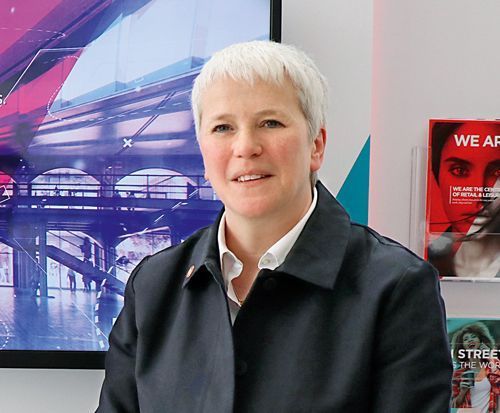Adapt and survive
Retail & leisure
Yvonne Court, partner, EMEA co-head of cross-border retail, Cushman & Wakefield: The first time I came to Poland was in around 1996, quite a long time ago. Poland is much more modern now than it was back then. I have been visiting Warsaw and the major cities to get a sense of the retail market in the country and they have changed considerably. The CEE retail market has clearly undergone a period of significant change and this will continue as it does elsewhere. I visited the Czech Republic for the first time in 1990, just after the revolution. That market has developed from having almost no retail of international quality into having retailers we find in other major cities across the world, such as London or Paris. Some of the newest shopping centre developments in Poland and elsewhere in the CEE region are now of a similar quality, or even better, than some we see in more mature retail markets.
Have you worked on introducing a brand to the CEE or on the launch of a CEE brand outside our region?
I have worked for many brands that are investigating a market entrance to the CEE region, such as American athletic footwear retailer Foot Locker. There is usually some time between these investigations and the actual appearance of any brand in a CEE market and, indeed, some may decide not to enter. Foot Locker, for instance, has been present for years in Western Europe and I have been working with them to understand the opportunities of Poland’s large market and how to establish a market presence across the country. It’s always advisable for retailers to prepare a strategy and do their due diligence, investigating all the different factors. In an ideal world I would be involved with the retail brand from the beginning, but it could take two or three years before the brands actually come to the market. This is a much more complicated process than you might think, as there are many factors to consider. International expansion is expensive and potentially risky, but sound research can help to minimise these risks.
Do new brands generally have to be adapted to new markets?
Yes, sometimes they do – but not always. It all depends on the brand and the concept. There are examples of brands going to new markets that have completely misunderstood their potential consumers and the market. For instance, a southern European retailer once went to Scandinavia without adapting its sizing; the brand didn’t realise that northern European women are generally physically larger than their southern counterparts.
What about the pricing?
This is important for all retailers to consider. One example was a French brand that tried to launch in the UK and is no longer there. They underestimated how savvy consumers when it comes to comparing pricing: despite having the right products for the market, the retailer was unsuccessful at attracting repeat costumers due to the high mark-ups in the stores.
What does a brand have to do to be successful on a particular market?
It is important to really understand local consumers and their spending habits. If you do not understand them, how they shop, where they shop, what they want in terms of product and price, then the brand is not going to survive in the new market.
Sometimes isn’t it enough for a very well-known brand just to show up? Won’t such a brand always be successful?
This depends on the local consumers and the brands themselves. From a brand perspective, they will want to keep their brand proposition and cachet together with their pricing strategy. Consumers are much more aware and educated about brands, and so are more discerning. People travel much more and are exposed to brands via all forms of media and are influenced by their friends and family. Consumers will often know what a brand stands for – and if it falls short when it arrives on their home market, they will not return to the store, whether it is physical or online.
How many brands are you working on?
This is hard to say. As a company Cushman & Wakefield works with many brands and F&B operators at any one time. Every requirement is different. I’m probably working right now with five–to-ten new brands to bring them onto new markets.
Is there actually any room for new brands in Poland?
There is always room for new brands to enter new markets. Retail is a very dynamic sector. It is constantly changing as are consumer needs. They always want the newest, latest product – which means there is scope to refresh the range. Shopping centre owners need to consider this to refresh the retail mix as a way to continue to drive customer loyalty and ultimately increased sales.
What changes do you foresee taking place in Poland?
Probably one of the biggest changes in Poland, and this is happening here already, is multi- or omni-channel – or however you describe it. At the end of the day it is all retail. Probably Poland is behind the game in comparison to some European markets. For instance, in the UK smartphone usage when it comes to retail is widespread. But Poland will eventually get there – and this has already started. Younger people are much more connected and retailers should be utilising this technology to drive consumers into the store to make it a more memorable shopping experience.





















































